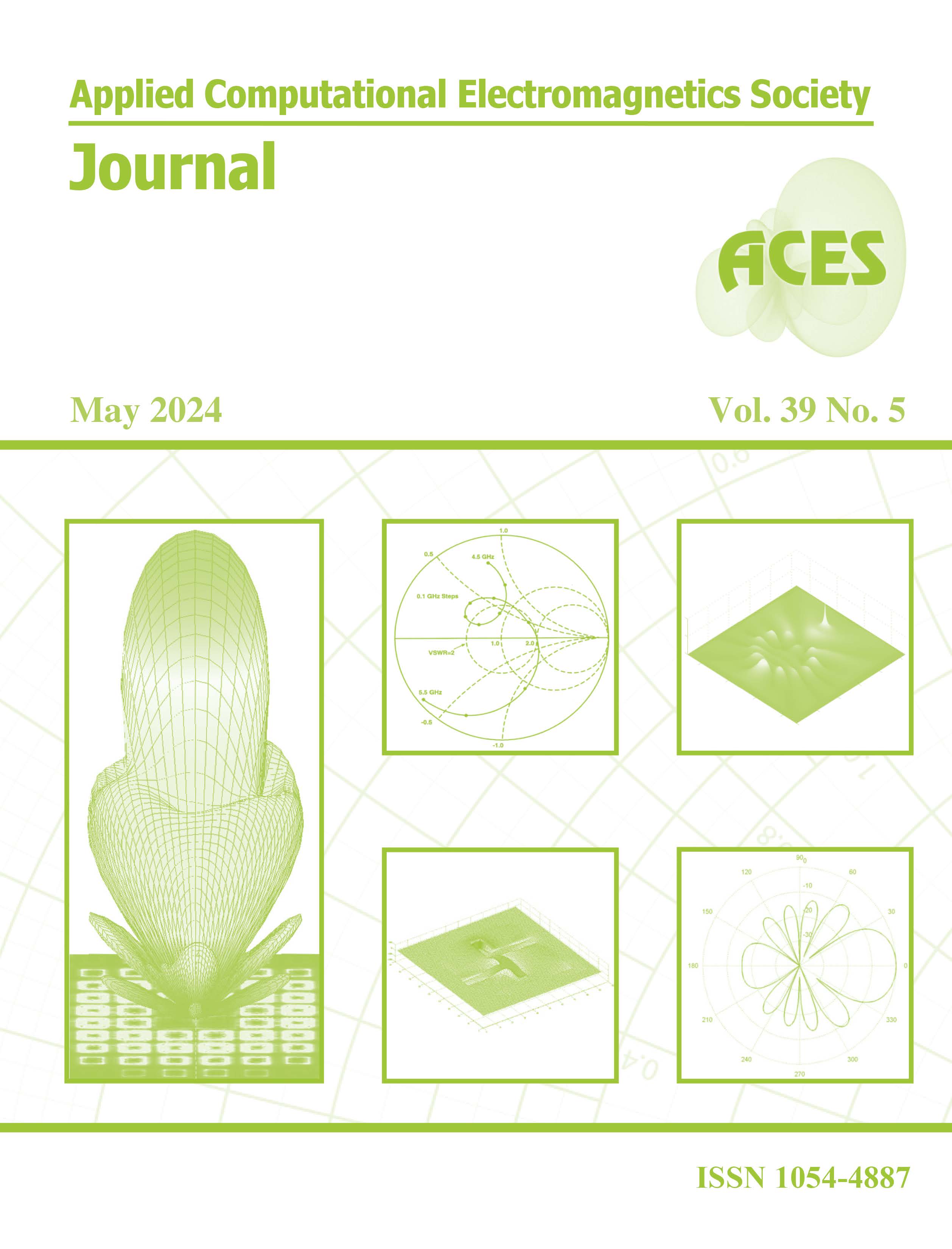Introducing a 12/10 Induction Switched Reluctance Machine (ISRM) for Electric Powertrains
##plugins.pubIds.doi.readerDisplayName##:
https://doi.org/10.13052/2024.ACES.J.390509关键词:
Electric vehicle, electromagnetic induction, reluctance machines, torque摘要
The induction switched reluctance machine (ISRM) is a novel electric machine that integrates the switched reluctance machine (SRM) with rotor inductive conductors to enhance performance in electric vehicle (EV) powertrain applications. In this topology, the rotor conductors act as a magnetic shield, diverting magnetic flux and preventing magnetic field lines from penetrating the rotor body. By engineering this design, short magnetic flux paths are created in both the stator and rotor of the electric machine. Since its recent introduction, the ISRM represents an emerging technology in the early stages of development. Similar to conventional SRMs, the ISRM can take on various topologies with different stator and rotor pole numbers. Minimizing rotor copper loss is a critical consideration in the ISRM design process. This paper examines two distinct ISRM topologies (12/10 and 12/8), and their characteristics are analyzed using the finite element method. Simulation results, including power density, torque density, efficiency, and copper loss, are presented and compared. Finally, the optimal ISRM topology is proposed for hybrid electric powertrains.
##plugins.generic.usageStats.downloads##
参考
L. Liu, Y. Huang, M. Zhao, and Y. Ruan, “Parametric modeling and optimization of switched reluctance motor for EV,” Applied Computational Electromagnetic Society (ACES) Journal, vol. 37, no. 9, pp. 948-958, 2022.
H. Tu, H. Feng, S. Srdic, and S. Lukic, “Extreme fast charging of electric vehicles: A technology overview,” IEEE Trans. Transport. Electrific., vol. 5, no. 4, pp. 861-878, Dec. 2019.
M. Yilmaz and P. T. Krein, “Review of battery charger topologies charging power levels and infrastructure for plug-in electric and hybrid vehicles,” IEEE Trans. Power Electron., vol. 28, no. 5, pp. 2151-2169, May 2013.
M. Popescu, J. Goss, D. A. Staton, D. Hawkins, Y. C. Chong, and A. Boglietti, “Electrical vehicles: Practical solutions for power traction motor systems,” IEEE Trans. Ind. Appl., vol. 54, no. 3, pp. 2751-2762, May/June 2018.
E. Ayciecek, N. Bekiroglu, I. Senol, and Y. Oner, “Rotor configuration for cogging torque minimization of open-slot axial flux permanent magnet synchronous motors,” Applied Computational Electromagnetic Society (ACES) Journal, vol. 30, no. 4, 2015.
G. Pellegrino, A. Vagati, P. Guglielmi, and B. Boazzo, “Performance comparison between surface-mounted and interior PM motor drives for electric vehicle application,” IEEE Trans. Ind. Electron., vol. 59, no. 2, pp. 803-811, Feb. 2012.
X. Sun, Z. Shi, G. Lei, Y. Guo, and J. Zhu, “Analysis and design optimization of a permanent magnet synchronous motor for a campus patrol electric vehicle,” IEEE Trans. Veh. Technol, vol. 68, no. 11, pp. 10535-10544, Nov. 2019.
B. Khan, F. Khan, W. Ullah, M. Umair, and S. Hussain, “Slot filling factor calculation and electromagnetic performance of single phase electrically excited flux switching motors,” Applied Computational Electromagnetic Society (ACES) Journal, vol. 35, no. 8, pp. 922-928, 2020.
M. Abdalmagid, E. Sayed, M. Bakr, and A. Emadi, “Geometry and topology optimization of switched reluctance machine: A review,” IEEE Access, vol. 10, pp. 5141-5170, Jan. 2022.
Z. Yang and F. Shang, “Development of a rare-earth-free SR motor with high torque density for hybrid vehicles,” IEEE Trans. Energy Convers., vol. 30, no. 3, pp. 132-143, Mar. 2015.
C. S. Edrington, M. Krishnamurthy, and B. Fahimi, “Bipolar switched reluctance machines: A novel solution for automotive applications,” IEEE Trans. Veh. Technol., vol. 54, no. 3, pp. 795-808, May 2005.
B. C. Mecrow, J. W. Finch, E. A. El-Kharashi, and A. G. Jack, “Switched reluctance motors with segmental rotors,” IEE Proc. Elect. Power Appl., vol. 149, no. 4, pp. 245-254, July 2002.
B. C. Mecrow, J. W. Finch, and A. G. Jack, “Segmental rotor switched reluctance motors with single-tooth windings,” IEE Proc. Elect. Power Appl., vol. 150, no. 5, pp. 591-599, Sep. 2003.
J. D. Widmer, R. Martin, and B. C. Mecrow, “Optimization of an 80-kW segmental rotor switched reluctance machine for automotive traction,” Proc. IEMDC, pp. 427-433, July 2013.
Emine Bostanci, Mehdi Moallem, Amir Parsapour, and Babak Fahimi, “Opportunities and challenges of switched reluctance motor drives for electric propulsion: A comparative study,” IEEE Trans. Transportation Electrification., vol. 3, no. 1, pp. 58- 75, Mar. 2017.
M. Abbasian, M. Moallem, and B. Fahmi, “Double stator switched reluctance motors: Fundamentals and magnetic force analysis,” IEEE Trans. Energy Convers., vol. 25, no. 3, pp. 589-597, Dec. 2010.
T. Guo, T. Shofield, and A. Emadi, “Double segmented rotor switched reluctance machine with shared stator back-iron for magnetic flux passage,” IEEE Trans. Energy Convers., vol. 31, no. 4, pp. 1278-1286, Dec. 2016.
S. Li, S. Zhang, T. G. Habetler, and R. G. Harley, “Modeling, design optimization, and applications of switched reluctance machines: A review,” IEEE Trans. Ind. Appl., vol. 55, no. 3, pp. 2660-2681, May 2019.
A. Bentounsi, F. Rebahi, and R. E. H. Bouchekara, “Multi-objective optimization design of 8/6 switched reluctance motor using GA and PSO algorithms,” J. Electr. Eng. Technol., vol. 15, no. 4, pp. 168-175, 2015.
C. Ma, L. Qu, R. Mitra, P. Pramod, and R. Islam, “Vibration and torque ripple reduction of switched reluctance motors through current profile optimization,” in Proc. IEEE Appl. Power Electron. Conf. Expo. (APEC), pp. 3279-3285, Mar. 2016.
M. Abbasian, “Induction switched reluctance motor,” U.S. Patent, US20170370296A1, June 30, 2020.
M. Azamian, M. Abbasian, and D. Gerling “Preliminary evaluation of induction switched reluctance motor for electric vehicle application,” IEEE Access, May 30, 2021.




